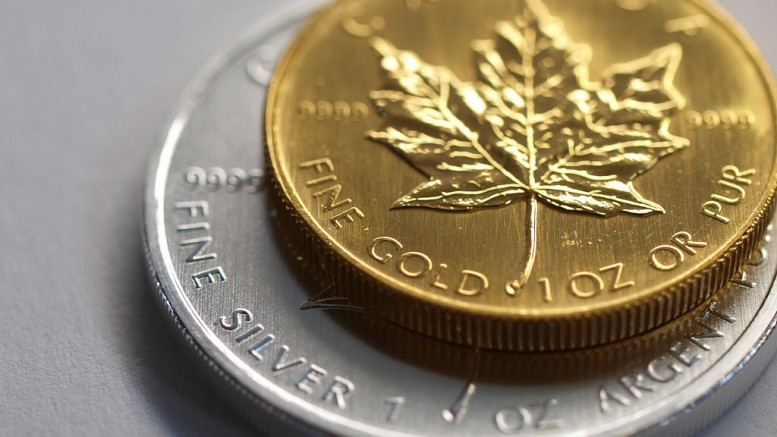As if there weren’t enough upheaval in the markets. Now Canada’s Bank of Nova Scotia (Scotiabank) — one of the world’s biggest lenders to the physical precious metals industry — has apparently told staff that it plans to close its metals business. Reuters, quoting two sources, reported last week that the bank will unwind its precious metals trading business in early 2021. Scotiabank has been involved in gold trading for many years and expanded the business when it acquired Mocatta Bullion from Standard Chartered in 1997. At its height, Scotiabank’s metals division had offices in North America, Europe and Asia. “Scotia was one of the top three traders and has traded precious metals for decades – a sad day for the name Mocatta, the predecessor company,” the mining team at Haywood Securities wrote in a research note. (Mocatta Bullion was created in 1684.)
Some say the closure — while not completely unexpected as Scotiabank had tried to find a buyer two years ago — will have an effect on price discovery and others warn that more banks may follow suit. As Reuters pointed out, Scotiabank “remains one of the five banks that settle gold trades and one of 12 market makers that provide liquidity in the London market. It is also a participant in daily auctions that set a globally used gold benchmark price.”
Jeffrey Christian, the managing partner and founder of CPM Group in New York, said the news wasn’t entirely surprising since Scotiabank had cut way back on its metals trading and storage business as early as 2018. But he also pointed out that the closure appears to be part of a larger trend. “There continues to be contraction in banking services, notably in metals and commodities trading, but actually across all banking services,” he told The Northern Miner. “Banks are closing and sloughing off business units, focusing on just a few areas of banking.”
Christian noted that the industry has witnessed a sharp decline in the number of banks involved in residential mortgages and retail real estate lending, for example, resulting in ever more concentration of business activities among fewer banks. “It is notable in commodities trading,” however, “since it is often said by bankers that metals trading ‘is not a traditional banking activity.’” But they’re wrong, Christian said. “Actually, it is the original traditional banking activity, if one goes back far enough,” and the consequence of the Scotiabank news, he said, “is that there is a further reduction in liquidity in the metals markets, which will be reflected in greater price volatility.”
Meanwhile, stimulus measures to combat the impact of COVID-19 are set to drive gold prices higher, bringing new forecasts for the metal almost every week. Marc Desormeaux, a senior economist at Scotiabank in Toronto, said in his latest commodity outlook published on April 30 that he sees a mean bullion price of US$1,650 per oz. this year and an annual average of US$1,700 per oz. in both 2021 and 2022.
Bank of America recently forecast real gold prices of US$1,695 per oz. in 2020, US$2,012 per oz. in 2021 and US$1,808 per oz. in 2022. It also predicted that gold will touch a peak of US$3,000 per oz. in 18 months, up from its earlier US$2,000 per oz. estimate, explaining that “as economic output contracts sharply, fiscal outlays surge, and central bank balance sheets double, fiat currencies could come under pressure and investors will aim for gold.”
For his part, Christian expects prices to spike up to US$1,800 per oz. or maybe higher this year, and his projection for the annual average is a new record of US$1,698 per ounce. (The record annual average gold price was in 2012 at US$1,670 per ounce.) Longer term, he expects prices to rise sharply, possibly averaging around US$2,300 per oz. in nominal terms, but not until around 2024. “If we project an annual average of that height,” he said, “it would not be out of the question that an intraday spike could be US$3,000.”
Finally, Mike McGlone, Bloomberg’s senior commodity strategist, believes gold “is on track to breach its all-time high from 2011 of about US$1,900 per ounce.” Writing in the May 2020 edition of Bloomberg’s Commodity Outlook, McGlone noted that “unprecedented global monetary stimulus is a worthy catalyst for the per-ounce price of gold to revert to its long-term mean versus the S&P 500 Index, in our view. With the index stabilized at about 2,900 on April 30, the mean since 1971 of just above 1-to-1 indicates about a US$1,000 rally in the metal. Compared with the aftermath of the 2008 financial crisis, when gold rallied about 170% to US$1,900 per oz. in 2011 from a low of about US$700, a 70% advance on the back of coronavirus-related global recession seems tame. The financial crisis was U.S.-centric versus the worldwide scope of the current – and potentially more enduring – economic calamity.”



Be the first to comment on "Editorial: Keeping up with gold price forecasts"